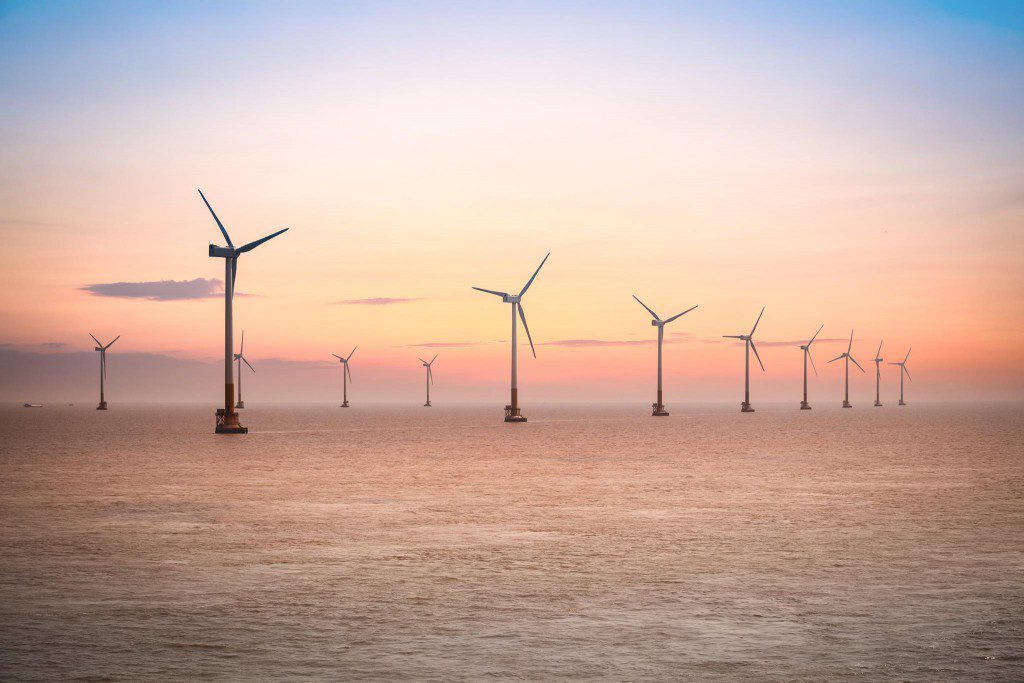Ørsted announced its decision to cease the development of the Ocean Wind 1 and Ocean Wind 2 projects in New Jersey on 31 October, making headlines with the decision as Ocean Wind 1 entered the construction stage earlier this year after getting the federal green light.
The company said additional supplier delays were further impacting the project schedule and leading to an additional significant delay (and costs) to the project. In its financial report for the nine months of 2023 published on 1 November, Ørsted details on the decision, revealing vessel availability as the main stumbling block.
According to the report, the issue has affected the timelines of its Revolution Wind and Sunrise Wind project in the US and the Changhua 1 and 2a offshore wind farm in Taiwan, on which construction work is underway.
“The Ocean Wind 1, Sunrise Wind, and Revolution Wind projects have been adversely impacted by supply chain bottlenecks. We have concluded that outstanding risks remain in these suppliers’ ability to deliver on their commitments and contracted schedules, including worldwide vessel scarcity. This could create knock-on effects, requiring future remobilisations to finish installation, as well as potentially delayed revenues, extra costs, and other business case implications,” the developer states in the report.
Besides reporting impairment losses related to its US projects and announcing the stop in progressing Ocean Wind projects, Ørsted says it now assumes “a new installation approach with a longer timeline for Revolution Wind and Sunrise Wind.” Furthermore, looking at the information in the report, the Sunrise Wind offshore wind project is not a completely certain bet either.
‘Revolution Wind Has an Attractive Forward-Looking Value Creation’
On the 704 MW Revolution Wind, the developer made the final investment decision (FID) around the same time the company decided to drop Ocean Wind projects.
“Notwithstanding the impairment of DKK 3.3 billion that we recorded in our Q3 results, Revolution Wind has an attractive forward-looking value creation with a forward-looking spread to WACC above our guided range,” Ørsted says in the financial report.
The Bureau of Ocean Energy Management (BOEM) issued a Record of Decision (ROD) to approve Revolution Wind’s construction and operation plan in August and the final approval is expected to be made this month.
Meanwhile, onshore construction has already started, with offshore construction planned to start in 2024 and the project expected to be completed in 2025.
Once up and running, the 704 MW Revolution Wind will deliver 400 MW of offshore wind power to Rhode Island and 304 MW to Connecticut.
Sunrise Wind Still Not Out of the Woods
As reported on 1 November, Ørsted recognised impairment losses of DKK 28.4 billion (about EUR 3.8 billion) in the first nine months of 2023, the majority of which are related to Ocean Wind 1, with the company saying that this was due to adverse impacts relating to supply chain delays, increased interest rates, and the lack of an Offshore Wind Renewable Energy Credit (OREC) adjustment on Sunrise Wind.
Ørsted and Eversource signed a 25-year OREC agreement with the New York State Energy Research and Development Authority (NYSERDA) in 2019, with an OREC strike price of USD 110/MWh.
This summer, the developer filed a petition with the New York State Public Service Commission (PSC) seeking price adjustments to the contract that would increase the OREC price by 27 per cent to USD 140/MWh due to significant cost and inflation increases since the agreement was entered into. The request was denied this October.
As for Revolution Wind, due to supply chain bottlenecks and vessel availability issues, Ørsted expects a longer timeline for the Sunrise Wind project too.
The developer says that it will have an opportunity to rebid the Sunrise Wind project in the accelerated solicitation that the State of New York announced following its third procurement, and at a bid price level reflecting the current component and financing costs.
However, the company noted that it will wait for the conditions of the request for proposal (RFP) to be issued and determine whether to rebid.
In a segment of its latest financial report talking about the EBIDTA guidance, Ørsted says that further adverse development of Sunrise Wind could lead to ceasing this US project as well.
New York State selected Sunrise Wind, located in federal waters more than 48 kilometres (30 miles) east of Montauk Point, as part of NYSERDA’s inaugural competitive 2018 offshore wind solicitation.
At 924 MW, the Sunrise Wind offshore farm is the largest offshore wind farm yet that would be connected to New York’s electric grid.
Greater Changhua 1 & 2a Completion Pushed Back to 2024
Another Ørsted project is experiencing delays due to bottlenecks in the supply chain – the 900 MW Greater Changhua 1 & 2a wind farm project offshore Taiwan, where construction is nearing completion.
However, it will now take more time than anticipated to install the last eleven wind turbines and, according to information in Ørsted’s report, wind turbine installation will not be completed by the end of this year, as anticipated, but in early 2024.
The company says that all 111 jacket foundations and 100 wind turbines have been installed at Greater Changhua 1 & 2a so far, with 89 wind turbines now commissioned and producing power under the subsidy.
However, while the final construction work is progressing, due to the weather and lack of installation vessel availability, all the project’s wind turbines will not be in place before year-end. “We aim to install and commission the remaining wind turbines during Q1 2024,” the company says.
The wind farm produced first power in April 2022, after the installation and energisation of the first batch of its Siemens Gamesa SG 8.0-167 DD turbines.
This is not the first delay for Greater Changhua 1 & 2a, as the project was initially scheduled to be fully operational by the end of 2022, but due to COVID-19-related delays, the commissioning was pushed to 2023.
